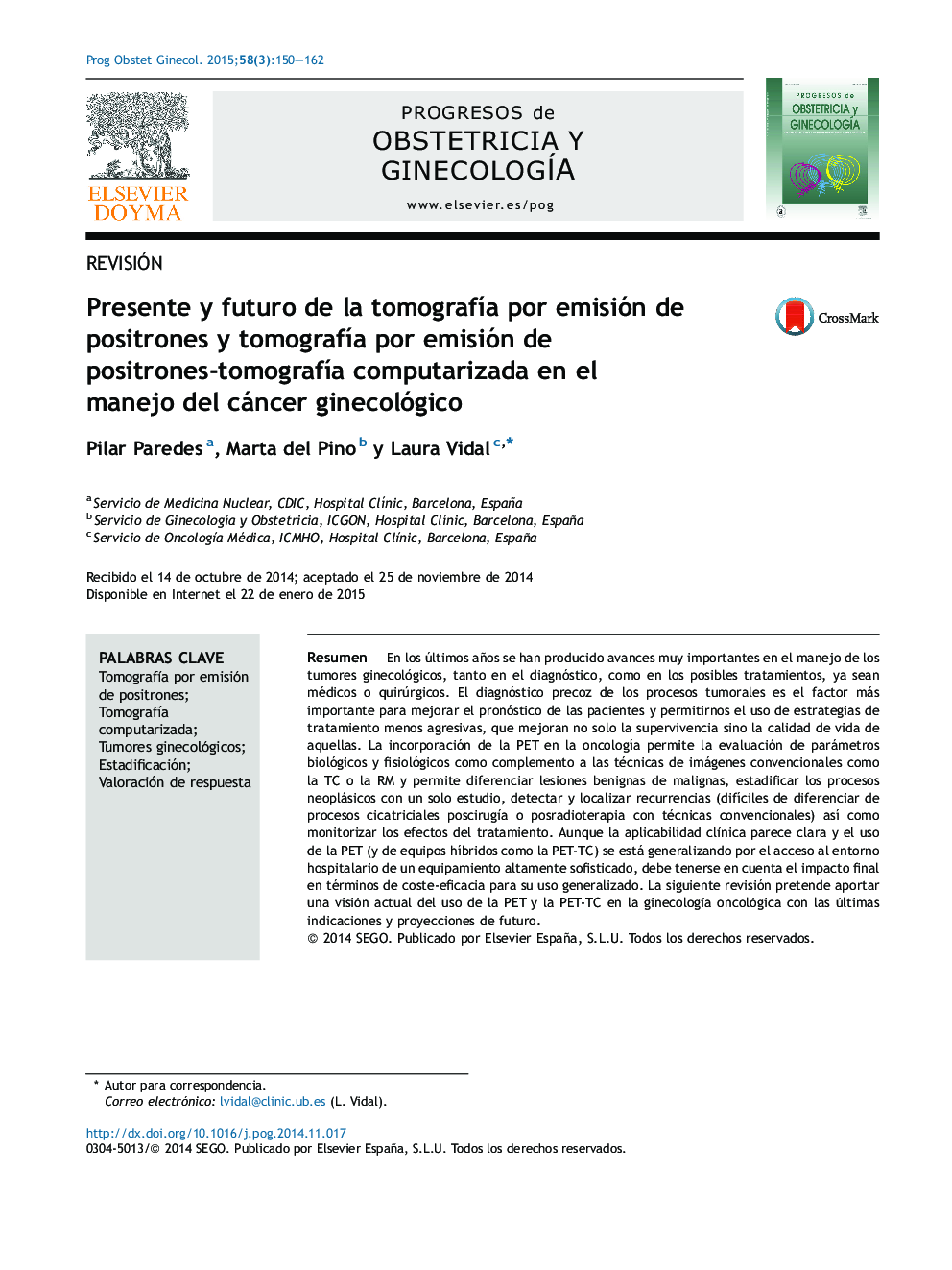| Article ID | Journal | Published Year | Pages | File Type |
|---|---|---|---|---|
| 3968544 | Progresos de Obstetricia y Ginecología | 2015 | 13 Pages |
Abstract
In recent years, major advances have been made in the management of gynecological tumors, both in diagnosis and possible treatments, whether medical or surgical. Early diagnosis of the tumor is the most important factor to improve patient prognosis and allows the use of less aggressive treatment strategies that may increase both survival and quality of life in these patients. The incorporation of PET in oncology allows evaluation of biological and physiological parameters to supplement conventional imaging techniques such as CT or MR and helps to better differentiate benign from malignant lesions, stage tumors in a single study, detect and locate recurrences (difficult to distinguish from scarring processes after-surgery or radiotherapy with conventional techniques) and to monitor treatment effects. Although the clinical applicability seems clear and the use of PET (and hybrid equipment such as PET/CT) is becoming widespread due to access to highly sophisticated equipment in hospitals, the final impact in terms of cost-effectiveness needs to be considered. The following review aims to provide a current overview of the use of PET and PET-CT in gynecological oncology and discusses the latest indications and future prospects.
Keywords
Related Topics
Health Sciences
Medicine and Dentistry
Obstetrics, Gynecology and Women's Health
Authors
Pilar Paredes, Marta del Pino, Laura Vidal,
